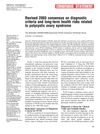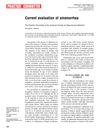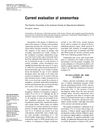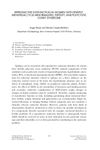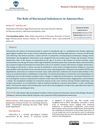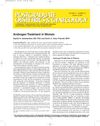Current Evaluation of Amenorrhea
November 2008
in “
Fertility and Sterility
”

TLDR Amenorrhea is relatively rare and initial testing should check FSH, TSH, and prolactin levels.
In 2008, the Practice Committee of the American Society for Reproductive Medicine provided guidelines for evaluating amenorrhea, distinguishing between primary and secondary types. The evaluation was recommended for females who had not menstruated by age 15 or within five years of breast development starting before age 10. Amenorrhea's prevalence, excluding pregnancy, lactation, or menopause, was about 3% to 4%, with the majority of cases caused by conditions like polycystic ovary syndrome (PCOS), hypothalamic amenorrhea, hyperprolactinemia, and ovarian failure. The World Health Organization classified amenorrhea based on factors like estrogen production and FSH levels. The evaluation process included a physical exam and hormone level tests. The document also discussed the lack of a serum antibody marker for autoimmune premature ovarian failure and the absence of proven infertility therapy for this condition. It recommended estrogen and progestin treatment for ovarian failure and highlighted the need for MRI in persistent hyperprolactinemia cases to check for pituitary tumors. It emphasized the importance of clinical judgment in differentiating between hypothalamic amenorrhea and PCOS, and the use of estrogen-progestin therapy or oral contraceptive pills to prevent bone loss when the primary cause of amenorrhea cannot be treated. The document concluded that amenorrhea is relatively uncommon and that initial tests should include FSH, TSH, and prolactin levels.
